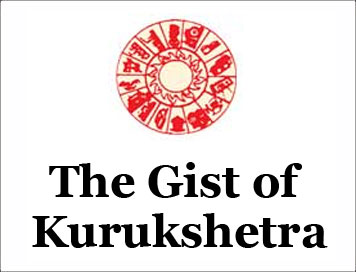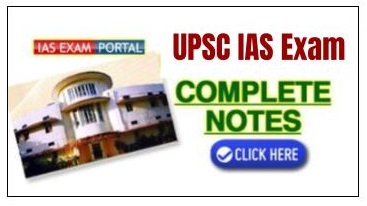(HOT) UPSC Current Affairs 2025 PDF
NEW! The Gist (NOV-2025) | E-BOOKS
(GIST OF KURUKSHETRA) SPACE TECHNOLOGIES: TRANSFORMING RURAL INDIA
(GIST OF KURUKSHETRA) SPACE TECHNOLOGIES: TRANSFORMING RURAL INDIA
(JANUARY-2025)
SPACE TECHNOLOGIES: TRANSFORMING RURAL INDIA
Introduction:
India's advancements in space technology have significantly influenced rural development, tackling vital issues in agriculture, disaster management, water resources, and land governance. Inspired by the forward-thinking vision of Dr. Vikram Sarabhai, ISRO has effectively incorporated space-based tools and applications into developmental initiatives.
Visionary Foundations:
-
Dr. Vikram Sarabhai’s Vision: Focused on utilizing space technology for the greater good, highlighting agriculture, natural resource management, and rural enhancement.
-
Initial Triumph: Identification of coconut wilt disease in Kerala via airborne infrared cameras showcased the promise of remote sensing (RS).
Space Technologies and Rural Uses
A. Remote Sensing (RS) Technology
Foundation:
-
Initiated with IRS-1A (1988) and evolved to sophisticated satellites like ResourceSat, CartoSat, and OceanSat. Allows precise tracking of land, water, and agricultural assets.
Applications:
Crop Prediction:
-
FASAL (Forecasting Agricultural output using Space, Agrometeorology, and Land-based observations): Encompasses major crops such as rice, wheat, cotton, and pulses. Offers pre-harvest yield predictions at both national and local scopes.
-
CHAMAN (Coordinated Horticulture Assessment and Management using RS and GIS): Concentrates on horticultural regions and boosting productivity.
-
NADAMS (National Agricultural Drought Assessment and Monitoring System): Monitors drought circumstances and gives early alerts to minimize losses.
-
Soil and Water Resource Oversight: Charts land use, soil condition, and water accessibility. Recognizes unused and waterlogged lands for restoration and effective usage.
Disaster Management:
-
Observes cyclones, floods, landslides, and wildfires.
-
Promotes immediate decision-making for rescue and relief efforts.
Advanced Satellite Functionalities
Thematic Satellites:
-
ResourceSat: Centers on land and water resource stewardship.
-
CartoSat: Supplies high-resolution mapping data.
-
OceanSat: Aids in observing oceanic conditions for fisheries.
-
INSAT: Assists in weather predictions and disaster management.
Innovative Techniques:
-
Incorporates AI, machine learning, UAVs, and hyperspectral imaging for accurate agriculture and rural enhancement.
-
Flagship Initiatives Transforming Rural Existence
GeoMGNREGA
-
Overview: Convergence of RS and GIS for geotagging and monitoring MGNREGA resources.
Achievements:
-
Visual representation of assets such as check dams, irrigation systems, and road infrastructures.
-
Augmented transparency and efficiency in resource distribution.
Geo-Portal:
-
Bhuvan Panchayat: Promotes decentralized planning at the Gram Panchayat tier.
-
National Database for Emergency Management: Facilitates disaster risk alleviation and management.
SVAMITVA Scheme
Objective: Digital management of land records via drone surveys and GIS.
Achievements:
Precise mapping of over 300,000 villages. Distribution of more than 135,000 property cards to rightful claimants.
Impact:
Transparent land administration promoting socio-economic advancement in rural regions.
Agricultural Insurance
PMFBY (Pradhan Mantri Fasal Bima Yojana):
Employs satellite data for area and yield assessments, damage evaluations, and risk classification.
Facilitates quicker resolution of crop insurance claims, minimizing conflicts.
Water Resource Management
Applications:
-
Supervision of river catchments and inter-basin transfers.
-
Real-time flood and drought oversight.
-
Assisting in hydrological modeling and watershed enhancement.
Integration of Weather Predictions and Agro-Advisories
Grameen Krishi Mausam Seva (GKMS): Dispenses bi-weekly weather-oriented advisories to over 700 districts and 3,100 blocks. Distributes information through print, digital avenues, and mobile applications.
Impact:
Empowers informed decision-making for crop scheduling, pest management, and irrigation strategies.
Capacity Building and Local Governance
-
Community Empowerment: Equipping local stakeholders with the skills to utilize geospatial instruments for decentralized strategizing. Tackling local obstacles such as land restoration, crop selection, and water conservation.
Geo-Portals: Enable data exchange for planners, decision-makers, and the community.
Ongoing Innovations and Future Outlook
-
Technological Progress: Hyperspectral imaging, IoT integration, and smart systems for improved remote sensing implementations. Expansion of satellite constellations for real-time tracking.
-
Vision for Tomorrow: Dr. Sarabhai’s conviction in space technology as a revolutionary asset continues to shepherd India’s pursuits toward sustainable rural development.
Conclusion
Space technologies have emerged as a profound catalyst in rural India, bridging gaps in development and fostering inclusive advancement. From precise agriculture to disaster response and land governance, ISRO’s initiatives reflect the aspiration of utilizing space for the benefit of society. As technology continues to advance, its ability to elevate rural communities and contribute to India's progress remains unparalleled.
CLICK HERE TO DOWNLOAD FULL PDF
CLICK HERE TO DOWNLOAD UPSC E-BOOKS
Study Material for UPSC General Studies Pre Cum Mains
Get The Gist 1 Year Subscription Online
Click Here to Download More Free Sample Material
<<Go Back To Main Page
Courtesy: Kurukshetra



